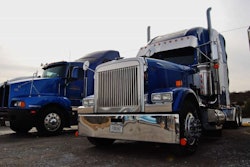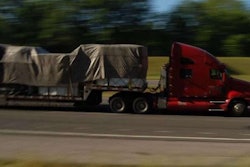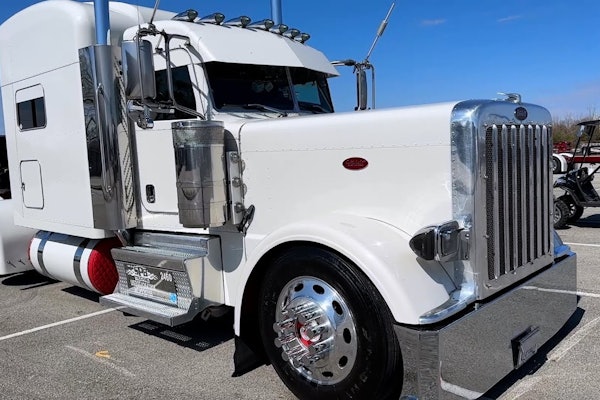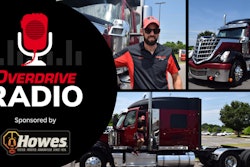Once I overcame my early business setbacks, detailed in my previous post, I began enjoying success as an independent owner-operator. I was convinced, too, that I was ready to be a successful small carrier with a fleet of 5, 10 or more trucks. But I did not remain on that path for long. I quickly discovered that the nominal return on investment compared to the added stress and headaches of having that small fleet simply wasn’t enough to justify a move I wasn’t ultimately going to be financially able or willing to continue.
I’ll share the conclusion of my experience shortly. Before that, let’s look at some of the challenges we face when growing from one truck as an independent to a small fleet with multiple trucks – and driver employees.
The three most common methods of growing a trucking business: purchasing trucks and hiring drivers, leasing trucks to our authority that are either owned by the driver or by another fleet owner, and lastly purchasing trucks and selling them to an entrepreneur, using lease-purchase agreements. For the purposes of this article, we’ll focus on those who purchase trucks and hire drivers.
When planning for growth, the impact to our commercial auto insurance (trucking insurance) is perhaps the easiest hurdle to prepare for. There are fundamentals that make it fairly simple to estimate the increase in our insurance premiums when considering the impact of adding a truck, trailer and driver to the policy. All things being equal (same truck and trailer type, year and value; same or similar driver age and MVR), you can expect the insurance premium to double when we increase from a one-truck operation to a two-truck operation. The biggest variable in estimating the premium increase, though, as my own story illustrated, is going to be the driver.

[Related: What goes into calculating your trucking insurance premium rate?]
As drivers, our individual motor vehicle records (MVRs) are seldom similar, for a variety of reasons. More often than not, company drivers looking for a new job tend to have more infractions on their MVR than owner-operators will typically have. Generally speaking, as owner-operators we make a conscientious effort to be more diligent to protect our MVR, for obvious reasons. If we do not, it will have a bigger negative impact on insurance premium costs, as well as risking the very existence of our business itself.
I always advise my insurance customers to use an MVR service to check any driver they consider as a hire well prior to purchasing the equipment. That will help avoid the potential hazard of making the biggest mistake of all – hiring a driver who isn’t acceptable to the insurance company, or a hiring driver who causes insurance costs to increase to the point of being unaffordable.
[Related: Driver before the truck in small fleet expansion]
Hiring and retaining drivers is the most challenging concern with growing a company. When I was expanding my business, the first mistake I made was believing that the drivers I hired, some of whom were friends that I had known for years, were going to stick around for a long time to come. I was seriously mistaken.
And driver turnover is financially devastating for multiple reasons. The immediate dilemma when we lose a driver is the truck is still there demanding to be paid for and not generating any revenue to set against its associated fixed costs -- loan payments, insurance premiums and registration. The longer the truck sits idle, the more desperate we become to hire a new driver. Frequently, that results in hiring the first available driver our insurance carrier is willing to add to the policy. More often than not, this new driver will have a less-than-stellar MVR and net an insurance-premium increase.
How bad can it be? As an example, one of my insurance customers recently added a driver that had several infractions on their MVR. Adding that driver more than doubled their policy premium -- from approximately $13,000 a year to about $28,000!
Keep in mind we are discussing truck owners who purchase trucks and hire drivers. The next challenge is proper classification. If we get it wrong, we have a serious risk of running afoul with compliance. I’m not referring to compliance with the FMCSA, IFTA, UCR, IRP, etc. Rather, I’m referring to agencies that few of us would ever want to cross sabers with -- namely, the IRS and each state’s Department of Labor. Being out of compliance with either or both of these can, and has many times over, led to some of the most devastating consequences I have ever seen a truck owner experience.
Unfortunately, many truck owners have been incorrectly led to believe that they can classify company drivers as “Independent Contractors” and issue them an IRS form 1099 instead of the correct IRS form W-2. Both the IRS and all the state DOLs I am aware of have very clear and defined conditions in which an individual can be classified as an independent contractor. There is no gray area. A driver we hire to drive trucks we own or lease is an employee, and not an independent contractor.
[Related: 1099 company drivers? Don't need an ABC test for that]
As such, when we hire drivers we are required to have both Worker’s Compensation and Unemployment Insurance as well as collect the Medicare and Social Security from the driver's wages and pay the matching amount as required by the IRS. A general rule of thumb suggested to me many years ago by my accountant was that if I hire a driver for a salary of $1,500 a week, I should estimate additional $1,500 a week for workers’ compensation insurance, unemployment insurance, matching Social Security and any additional benefits such as medical benefits or a 401K. Since most of these added costs change, I believe it wise to always estimate high. That way when these costs increase, just like our fuel costs, we’re financially prepared.
For example, I’ve seen workers’ compensation premiums anywhere from 8% to 25% of the driver’s salary. Using my high estimate, for the example above, that brings our total cost of hiring a single driver to an estimated $3,000 a week.
Personally, to grow my trucking business, I elected to buy and sell trucks using the lease-purchase method. It was a disaster. The drivers who signed the lease-purchase agreements discovered that it was a lot harder being an owner-operator than it was being a company driver. They all elected to return to being a company driver – at a company other than mine! That resulted in me having trucks I was paying for that were not generating any revenue.
I considered hiring employee drivers. I crunched the numbers and considered the risk. It was painfully obvious to me that I would be better off accepting my losses and returning to being a one-truck independent owner-operator. I sold the extra trucks and trailers, and leaned back on myself as the only driver I had to worry about.
It was the best personal, business and financial decision I ever made owning trucks.
Find more information about the ins and outs of safety and business processes, among a myriad other topics, in the Overdrive/ATBS-coproduced "Partners in Business" manual for new and established owner-operators, a comprehensive guide to running, and eventually growing, a small trucking business. Click here to download the newly updated 2022 edition of the Partners in Business manual free of charge.












